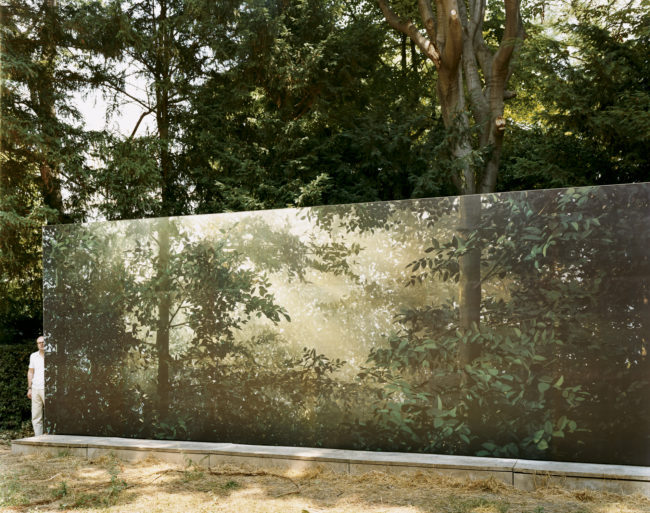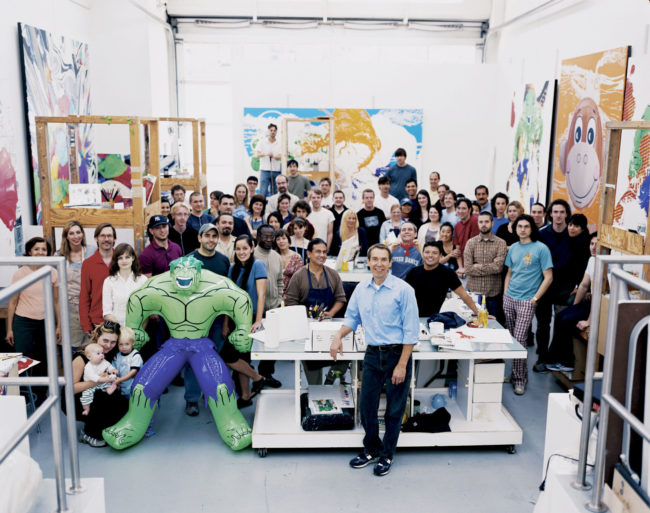The Art of the Personal Project is a crucial element to let potential buyers see how you think creatively on your own. I am drawn to personal projects that have an interesting vision or that show something I have never seen before. In this new revised thread, I’ll include a link to each personal project with the artist statement so you can see more of the project. Please note: This thread is not affiliated with any company; I’m just featuring projects that I find. Please DO NOT send me your work. I do not take submissions.
Today’s featured artist: Jason Schmidt
Jason Schmidt
May 13, 2012
Brooklyn, New York
At this point, I have photographed more than five-hundred artists, starting from 1997, carting my Linhof 4×5 and Nikon cameras through boroughs, up what might amount to several hundred flights of stairs, and occasionally to far-flung destinations around the globe to take a portrait of an artist in her or his (and sometimes their) studio or work environment. Much of the earlier artist portraits were collected in Artists, which came out in 2007. This book is a continuation of that project: the artists range from young to old, emerging to career peaking, world-famous to as-of-yet little known. It includes those exploring traditional mediums to those down-right confounding the entire premise of the art world as it exists today. The pages are rife with internal connections—some of the artists are friends, partners, studio mates, mentors. A few came to me by way of a suggestion from a fellow artist, and, perhaps, some are even competitors or enemies. But, for me, the 168 artists here represent something of an improvisatory art community, not so much a “group show” in industry speak but a barrage of very different scenarios where very different kinds of work is being made under some kind of constraint. That constraint might be time, money, a deadline, a market hungry for more, or simply the fact that a photographer demanded anywhere from a half an hour to four hours out of their busy schedules..
Each experience with an artist is singular—the resultant photograph is often a mixture of collaboration, on-the-spot inventiveness, my attempt to capture the artist and the environment in a concise, material way, and the restrictions that the studio or location provides. What I don’t do is editorialize. I try not to impose my conception of what an artist should be doing, and, since my job is to document, I don’t create scenarios or forge clever, telltale demonstrations. (You will never hear me say, “pretend you’re painting!”) I do often speak with an artist in advance and discuss a possible concept or conceit, and I’m always impressed by the number of subjects who actively want to get out of their comfort zones and participate in the creative process., Just as often, however, I let my first impression right from the studio door guide me. The first view is often the best solution. Generally speaking, I like to frame a picture around the studio space or around an in-progress artwork and then to decide where to place the artist. The artist might recede into the space and become another object in the tableau or he or she might become the focus of the photo. I don’t see these photographs as portraits first and environments second—the two are not mutually exclusive. Mostly I am interested in understanding an artist in the context of the work. I try to capture how the art was being made or conceived—the circumstances and the conditions, which are often insanely messy or shockingly organized and usually somewhere in between. Unlike the final installation shot, the money shot as it were, the photographs in this book record a very specific moment in time—when the photographer went on a visit to see an artist. The artworks in these photographs looked different the day before I arrived and many of them surely changed dramatically in the days after I left. These are the instants when everything is up in the air and the art, the artist, the photograph, and even this photographer wait and wonder how it will all turn out.





To see more of this project, click here.
To purchase his most recent book click here
(Artist I is sold out)
APE contributor Suzanne Sease currently works as a consultant for photographers and illustrators around the world. She has been involved in the photography and illustration industry since the mid 80s. After establishing the art buying department at The Martin Agency, then working for Kaplan-Thaler, Capital One, Best Buy and numerous smaller agencies and companies, she decided to be a consultant in 1999. She has a new Twitter feed with helpful marketing information because she believes that marketing should be driven by brand and not by specialty. Follow her at @SuzanneSease.
Jason Schmidt is a photographer and director who specializes in portraits of artists and cultural figures, as well as architecture and interiors. A New York native, he received a Bachelors of Arts in art history from Columbia University in 1992.
Schmidt has photographed over 600 contemporary fine artists since 2000. His first book, Artists, was published in 2007 and Artists II (Steidl), his second book on the subject, was published in the fall of 2015. This body of work has been exhibited at Deitch Projects, New York and The Museum of Contemporary Art, Los Angeles. His work is included in the Marguiles Collection in Miami, where 135 artist portraits are currently on view.
New York Times art critic Karen Rosenberg observes that Schmidt’s photographs “transcend Pollock-paints-a-picture clichés; each photograph has its own peculiar aesthetic, from Paul McCarthy’s being caught like a serial killer in a boat spattered with fake blood, to prankster Maurizio Cattelan’s installing his infamous sculpture of a fallen pope.”
Schmidt shoots regularly for magazines including Architectural Digest, New York Magazine, The New York Times T Magazine, Vogue, W and Wallpaper. In addition to his print work, Schmidt has been directing short films on both art and architecture for several years.